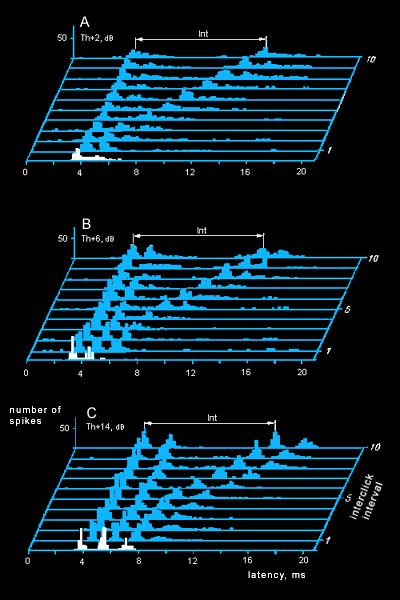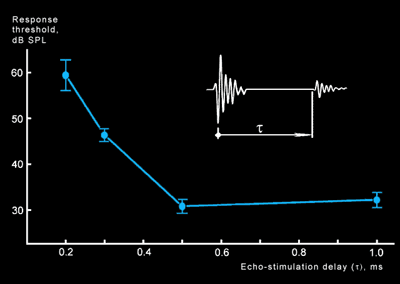Temporal resolution of a moth ear
The principal possibility to realize echolocator requires sufficient temporal resolution of an ear - it must be able to distinguish between the own probing signal and the echo that follows shortly.
Compared to other echolocating animals, noctuid moths are very small - their common wingspan is about 2.5 - 3cm. For adequate orientation a moth must be able to detect echoes from a commensurable distance (say, 3 - 20 cm) which gives us delays from 0.18 to 1.2 ms according to the speed of sound. Detection of obstacles at greater distances is also could be possible, but location within the immediate surroundings is of fundamental importance since it is intended to prevent sudden collisions.
Theoretically estaimated temporal resolution of the tympanic membrane, based on different assumptions, lies within the range 0.18 - 0.35 ms (Lapshin, Fyodorova, 1996), which means that the membtane itself allows to distinguish between the two sounds coming shortly one after another.
But, several independent studies had demonstrated that the most sensitive acoustic receptor, the A1 cell, is capable to distinguish two pulses with no less than 3ms between them (Lapshin, Fyodorova, 1996; Tougaard, 1996).


